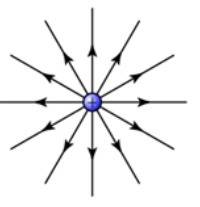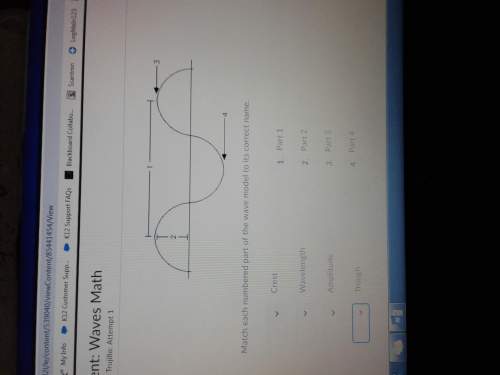
Physics, 24.07.2019 14:30 lexhorton2002
4. complete each of the following parts and show your work: a.) draw the electric field around a +2.0 × 10–5 c point source charge. draw the field lines and indicate their direction. draw two different equipotential lines. b.) calculate the force between a +5 µc test point charge and this source charge at a distance of 2.00 cm. (µc = 1.0 × 10–6 c) c.) if the test charge were moved closer to the source charge, would the change in its potential energy be positive, negative or zero? explain.

Answers: 1


Another question on Physics

Physics, 21.06.2019 16:10
In 1995 a research group led by eric cornell and carl wiemann at the university of colorado successfully cooled rubidium atoms to the 20-200 nk temperature range. assuming (incorrectly) that the rubidium atoms behave liké particles of a classical ideal gas, calculate the rms speed of a rubidium atom at a temperature of 112.0 nk. in the experiments one particular isotope of rubidium was used, rubidium-87. the molar mass of this isotope is 86.91 q/mol. tries 0/20 submit answer
Answers: 1

Physics, 22.06.2019 06:30
What are similarities and differences between refraction, reflection, diffraction and absorption?
Answers: 3


Physics, 22.06.2019 12:50
Assume you measured the mass of the cart to be (500 ± 1) g and the mass of the additional mass you put on the cart to be (500 ± 1) g as well. since the scale you are using in the lab cannot measure objects heavier than 600g you will have to sum up individual pieces and propagate the error. so what would be the mass and the standard error of the cart and the mass
Answers: 3
You know the right answer?
4. complete each of the following parts and show your work: a.) draw the electric field around a +2...
Questions



Mathematics, 24.07.2019 19:20

Biology, 24.07.2019 19:20

Mathematics, 24.07.2019 19:20

Chemistry, 24.07.2019 19:20




History, 24.07.2019 19:20

Chemistry, 24.07.2019 19:20


Mathematics, 24.07.2019 19:20

Mathematics, 24.07.2019 19:20


Health, 24.07.2019 19:20


Mathematics, 24.07.2019 19:20

English, 24.07.2019 19:20




 is our test charge. Substituting, we find that the force is equal to
is our test charge. Substituting, we find that the force is equal to






